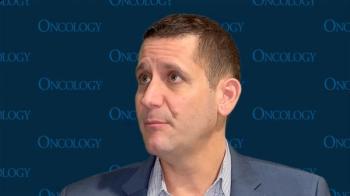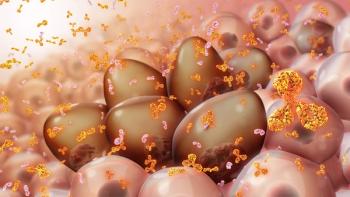
Oncology NEWS International
- Oncology NEWS International Vol 9 No 9
- Volume 9
- Issue 9
Chronotolerance Data Presented
CHARLOTTESVILLE, Virginia-Administering camptothe-cins, such as irinotecan (Camptosar), or giving 5-fluorouracil (5-FU) at the right time of day might reduce toxicity and permit use of significantly higher doses. Tyvin A. Rich, MD, Department of Radiation Oncology at the University of Virginia in Charlottesville, Virginia, discussed this chronotolerance data during a workshop sponsored by the University of Texas M. D. Anderson Cancer Center and Pharmacia Oncology.
CHARLOTTESVILLE, VirginiaAdministering camptothe-cins, such as irinotecan (Camptosar), or giving 5-fluorouracil (5-FU) at the right time of day might reduce toxicity and permit use of significantly higher doses. Tyvin A. Rich, MD, Department of Radiation Oncology at the University of Virginia in Charlottesville, Virginia, discussed this chronotolerance data during a workshop sponsored by the University of Texas M. D. Anderson Cancer Center and Pharmacia Oncology.
Camptothecins are potent radiation sensitizers in vivo, and radiation sensitization is dependent on dose and schedule, Dr. Rich explained. Acute toxicity is time dependent, and data support a clinical protocol testing chronomodulated irinotecan administration with irradiation.
Preclinical studies in mice showed that weight loss increased and survival decreased if irinotecan was given at night, during the nocturnal animals most active period. This risk period coincides with the peak proliferative period of intestinal mucosa. Dr. Rich said that moving the dose to the animals less-active period reduced gastrointestinal toxicity but did not affect myelotoxicity.
Less Toxic During Down Time
The timing of 5-FU/leucovorin can also affect overall survival. This is apparently due to much lower rates of mucositis, diarrhea, and neutropenia when given at 5:00 AM, during the animals less active period.
Pancreatic cancer phase II studies have shown that toxicity of 5-FU/leucovorin can be reduced by changing the time of dosing. S-phase agents are likely to be more toxic during the day in humans, since cell proliferation in the intestine is more active during the day. To reduce toxicity, choose a time when the cells are preferentially out of cycle, Dr. Rich said.
There is no evidence for circadian-dependent tumor response with 9-aminocamptothecin (9-AC) and radiation therapy. Because of circadian-dependent toxicity, we might be able to dose-escalate radiosensitizers by as much as 30% through chronomodulation, and this may permit an improved therapeutic index for irinotecan and radiation therapy, Dr. Rich concluded.
Articles in this issue
over 25 years ago
Soy’s Effect on Breast Cancer Remains Uncertainover 25 years ago
STAR Enrollment Tops 6,000 in First Year of Recruitmentover 25 years ago
New rhTPO Being Tested in Three Trialsover 25 years ago
New Research Centers Target How Market Forces Affect Health Careover 25 years ago
PRIMATOM System Combines CT Scanning With Radiation TherapyNewsletter
Stay up to date on recent advances in the multidisciplinary approach to cancer.
















































































